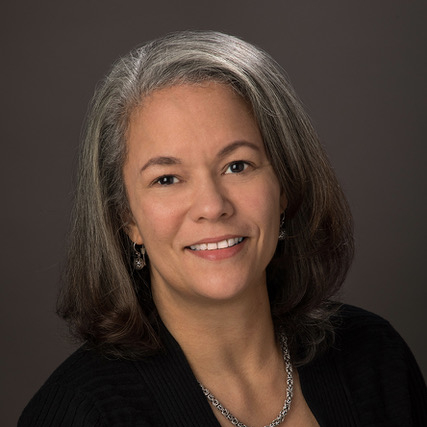New Designs for School
Coaching for Student Success: What Does that Really Mean?
Topics

We’ve all had the experience of truly purposeful, authentic learning and know how valuable it is. Educators are taking the best of what we know about learning, student support, effective instruction, and interpersonal skill-building to completely reimagine schools so that students experience that kind of purposeful learning all day, every day.
What does coaching actually mean, and how does it work in the classroom?
Recently, I attended a talk by Peggy Orenstein, author of Girls & Sex, a revealing look at the sexual lives, pressures and perspectives of ‘successful’ girls and young women. She talked about how teens today are living in a world of ‘hookup culture,’ and deciding whether or not to participate in it. But there’s no definition of just what a ‘hookup’ is exactly. And most teens think it means a) whatever their own personal experience has been or b) something far more advanced than what they’ve imagined. But the bottom line is this: if you ask 50 kids what a ‘hookup’ is, you’ll get 50 answers. (Confusion and ambiguity abound.)
The same is absolutely true when it comes to ‘coaching,’ the latest buzzword that attaches to student success at about the same rate that teenagers attach to each other at a high school dance. Most people don’t know what it means, and ascribe to it either their own experiences to date (mostly from athletic coaching) or what they imagine it would be based on limited knowledge or experience.
What is Coaching, Anyway?
There actually is an agreed-upon definition of coaching (albeit somewhat broad and vague) and a set of identifiable competencies that go with it. There’s a self-governing association (International Coach Federation) for coaches and a code of ethics that all professional (non-athletic) coaches certified by the ICF follow.
In a nutshell, coaches work with clients to advance the clients’ agenda for success. Coaches are neutral about their clients’ goals; the client sets the agenda. Coaches enter each engagement sincerely believing that their client is naturally creative, resourceful and whole. They don’t need to fix their clients. They are there to facilitate their client’s natural gifts.
Coaches and clients relate to one another as peers, and while coaches are mindful of their clients’ contexts, they don’t accept contextual limits as a reason not to achieve desired goals. So if you tell your coach, “I can’t do this really important thing, I’m just too busy!” they will likely reply, “Everybody’s busy; tell me how we’re going to get to your goal if you choose not to do that really important thing.” If you want to read more about professional coaching, I recommend the book Co-Active Coaching by Laura Whitworth and team.
How Does Coaching Work in a Classroom?
Now, obviously these cornerstones need to be adapted for the education context; seventh graders and teachers aren’t peers. And while seventh graders may be naturally creative, resourceful and whole, they don’t always act like it. College students may be more like peers with their instructors since they are young (or older) adults, but there too, we have to adapt for context. They are trying to graduate on time, and that may require them to add things onto their agenda—or take things off—to make it happen.
It also requires that teachers adapt themselves to a different kind of interaction with students. Basically, it’s a more curious and less egotistical version of the Socratic method, where the teacher asks questions rather than tells students information or answers. The questions don’t need to be particularly probing—the “grandmother method” works just fine—“how did you do that? Can you do it again? Tell me more?” The truth of the matter is that if you believe students can learn and you foster their powers of self-directed discovery, they will learn.
Regardless of whether you’re leading a class of seventh graders or college juniors, certain learning strategies like project-based learning or internships are really well aligned with a coach-approach. Getting into a project naturally generates hundreds of authentic questions that build learners from every angle, whether it’s the content (how do we measure a right angle here and make this corner work?) to character (how come no one is listening to my great idea?). Grappling with and resolving those questions is a deep and transformative experience.
But regardless of whether the instructor creates specific learning tasks and lesson plans that align well with coaching, she can still take a coach-like approach to interacting with her student. Imagine what might have happened if all of your teachers had regarded you as naturally creative, resourceful and whole, especially when you could not see yourself that way.
What about Coaching for Professional Learning?
What about the adults? Co-active coaching can be exceptionally powerful with educators and administrators as well. We employed a modified version of this approach with the teams participating in the Breakthrough Models Academy and the Breakthrough Models Incubator, and it worked well. The teams’ coaches provided the view of a “critical friend,” asking questions to help teams shape their plans and encouraging them to think bigger all the time.
Providing coach training to teachers is also an excellent professional development option. I’ve done it with early learning consultants who supported an ambitious quality improvement test for Washington state’s early childhood community; 85% ranked it as one of the best professional development experiences of their entire career. While they aren’t going to be coaches in the classical sense of the word, this form of training really helps instructors make the move from ‘sage on the stage’ to ‘guide on the side.’
There are lots of upsides to taking a coach-approach in the classroom, whether it’s with the students or the teachers. I think the most important, however, is that it positions the power and accountability for learning with the learner and lets teachers focus on the thing that initially drew them to teaching: the joy of discovery. At the end of the day, the best thing for both students and teachers is for learners to own their goals and be responsible for achieving them. Fostering that sense of agency and accountability as early as possible sets people up for lasting success in their personal and professional pursuits.
Learn More
The Power of Presence: Transforming Educators’ Lives through Coaching - Coaching represents an opportunity for educators and schools to strengthen and reimagine learning, culture, and systems.
"We're Working as One": How One Principal Built Her Leadership Team to Improve Instruction - An elementary school strengthened coaching to improve teaching practice, student learning and outcomes, and school culture by distributing leadership among the instructional leadership team.




